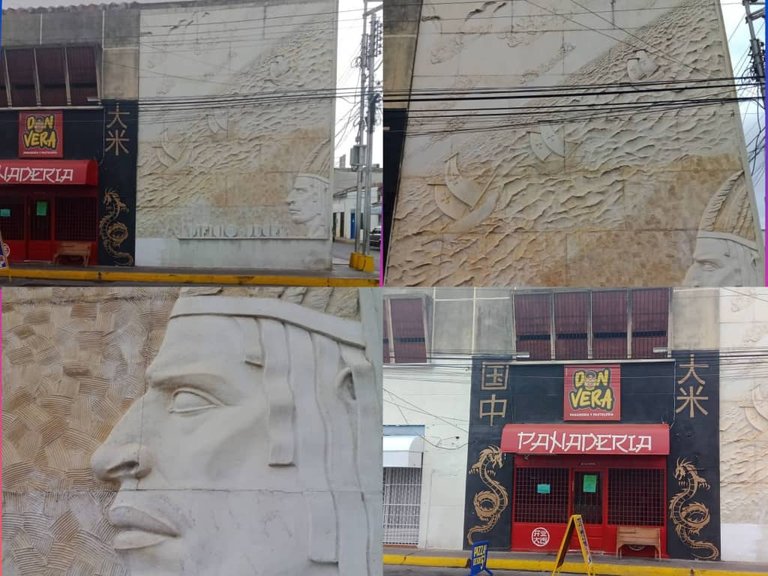
Greetings friends lovers of architecture and design, I hope you are well and have an excellent weekend, it is a pleasure to share again with you the beautiful buildings that stand out in my city for its design, colors or great stories of the colonial past of Cumaná; this time I share with you a striking building that stands out for its large mural made of concrete, it is the Sucre building, located in the historic center of the city near the church Santa Inés. In it works a bakery and pastry shop, in the facade has a wide red door with grilles of small pictures, the wall is black and is decorated with figures and letters of golden color corresponding to the Chinese culture, the name of the bakery is Don Vera, offers a variety of breads, cakes and delicious desserts, also have included the pizzas on their menu with Delivery service.
The upper part of the building has wooden windows protected by black iron bars, which are separated by white horizontal and vertical lines that form several rectangles; above the windows is a cornice decorated with tiles, above it is a kind of protective roof made of wood with water collecting pipes tied to the front beam, next to it is a hotel that retains the same design features at the top.
Saludos amigos amantes de la arquitectura y el diseño, deseo se encuentren bien y tengan un excelente fin de semana, es un placer compartir nuevamente con ustedes las hermosas construcciones que destacan en mi ciudad por su diseño, colores o grandes historias del pasado colonial de Cumaná; en esta ocasión les comparto un llamativo edificio que resalta por su gran mural elaborado en concreto, se trata del edificio Sucre, ubicado en el centro histórico de la ciudad cerca de la iglesia santa Inés. En él fuciona una panadería y pasteleria, en la fachada tiene una amplia puerta de color rojo con rejas de pequeños cuadros, la pared es de color negro y está decorada con figuras y letras de color dorado correspondientes a la cultura china, el nombre de la panadería es Don Vera, ofrece gran variedad de panes, tortas y deliciosos postres, además han incluído las pizzas en su menú con servicio de Delivery.
En la parte superior el edificio tiene ventanas de madera protegidas con rejas de hierro en color negro, las cuales están separadas por líneas horizontales y verticales de color blanco que forman varios rectángulos; encima de las ventanas se ubica la cornisa decorada con tejas, por encima de ella está una especie de techo protector hecho de madera con tubos recolectores de agua amarrados a la viga frontal, al lado se encuentra un hotel que conserva las mismas características de diseño en la parte superior.
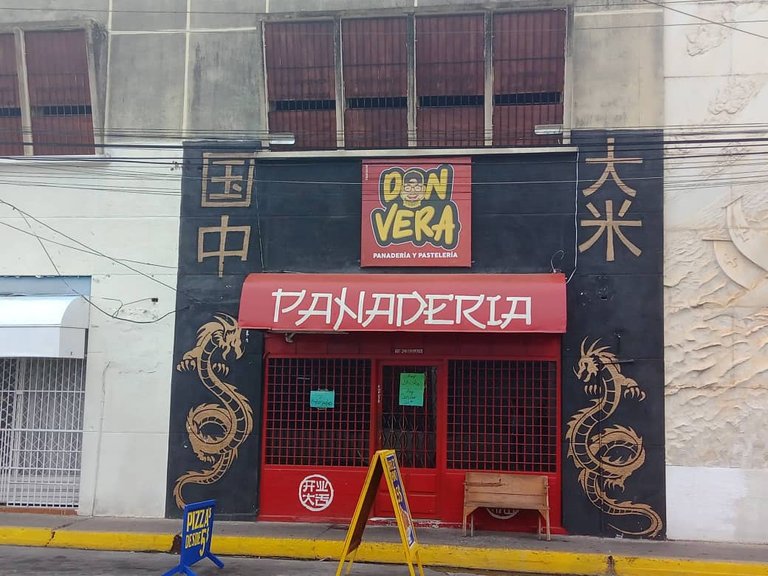
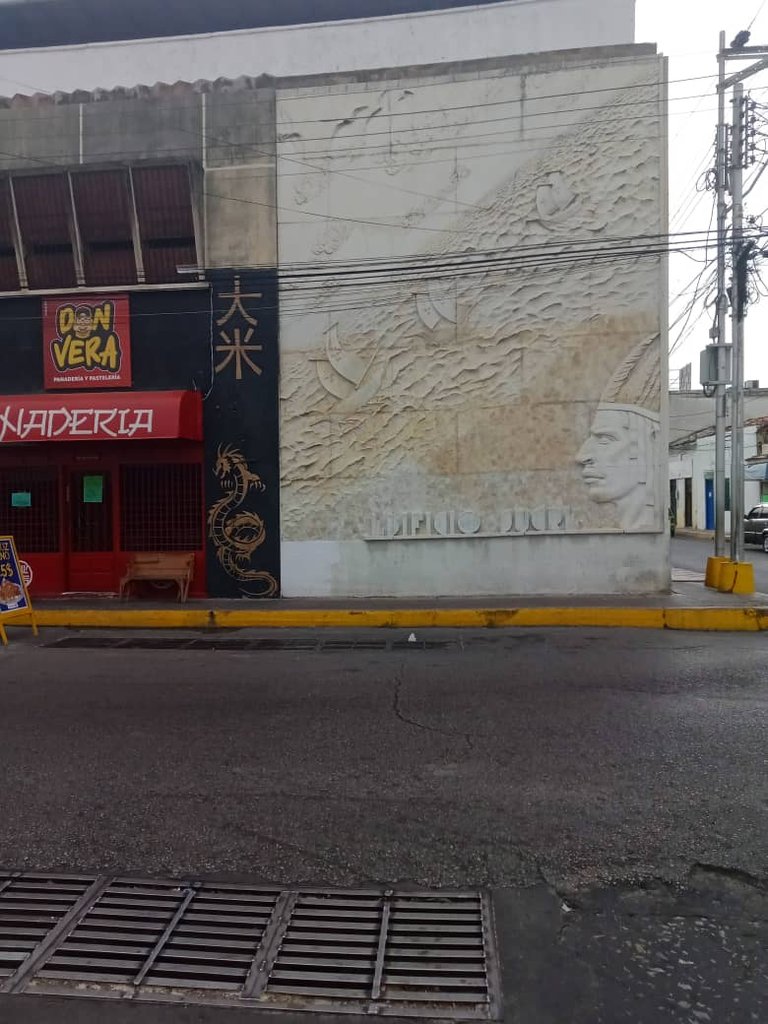
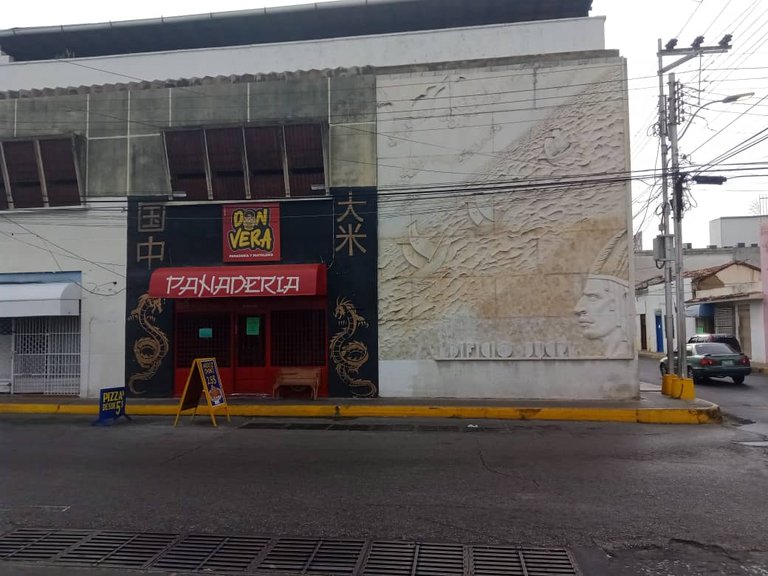
The mural is located in the corner of the building and in it you can see a beautiful seascape with several ships or caravels that have a cross in the center and are moved by the wind and waves of the sea, in the lower right part the figure of a cacique (indigenous leader of the Cumanagotos and aboriginal tribes that lived on the eastern coasts of Venezuela), who was in charge of directing and organizing his people to carry out activities such as fishing and hunting, as well as putting together defensive strategies to confront the enemy tribes; In some ethnic groups he fulfilled the function of a priest and a healer (shaman), his clothing included a crown made with feathers and strips of vibrant colors that covered part of the face; The number of feathers on the crown represented the power and authority of the chief.
El mural se ubica en la esquina del edificio y en el se observa un hermoso paisaje marino con varias naves o carabelas que tienen una cruz en el centro y son movidas por el viento y olas del mar, en la parte inferior derecha resalta la figura de un cacique ( líder indígena de los Cumanagotos y tribus aborígenes que vivían en las costas orientales de Venezuela), el cual se encargaba de dirigir y organizar a su pueblo para la realización de actividades como la pesca y caza, además armar estrategias defensivas para enfrentar a las tribus enemigas; en algunas etnias cumplía la función sacerdotal y de curandero (chamán), su vestimenta incluía una corona hecha con plumas y tiras de vibrantes colores que cubrían parte del rostro; la cantidad de plumas en la corona representaba el poder y autoridad del cacique.
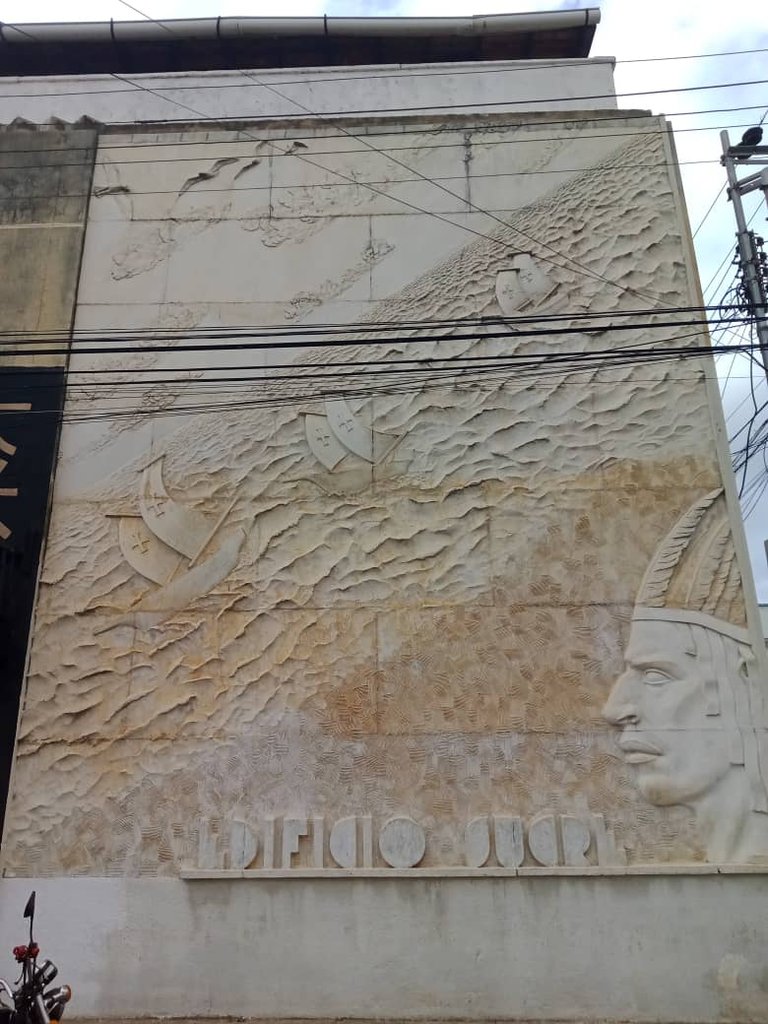
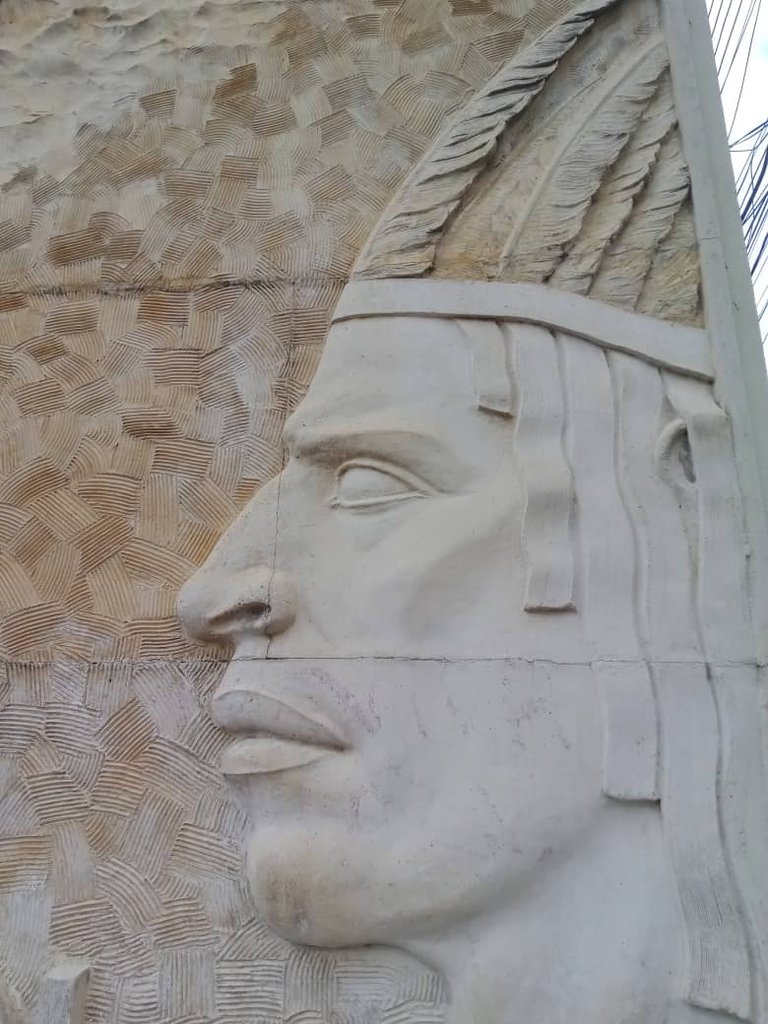
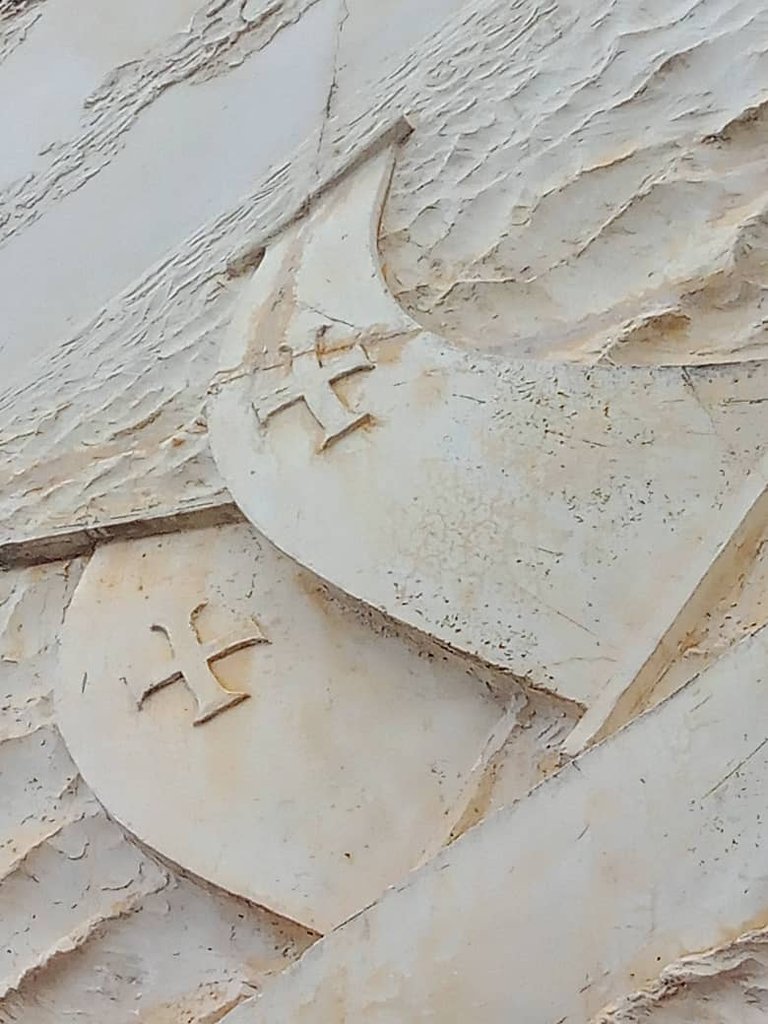
At the top of the mural you can see birds flying in the sky and several clouds; Since I saw the mural it caught my attention, I also liked the design and the theme, which is closely linked to the history of Cumaná and other states of Venezuela inhabited by indigenous groups that maintained a close relationship of harmony with nature taking advantage of the resources that This offers to build their houses, kitchen utensils, work tools, among others; I consider it to be a great work of art with attention to detail where the figures of the birds, the ships and especially the features of the chief stand out, his face and accessories are well outlined and show the dedication and creativity of the sculptor in carrying out this work.
According to the information provided by a lady resident in the city center, this mural represents the invasion of the territory by the conquerors and the fight of the aborigines to defend their lands, the chief appears imposing and strong in front of the waters of the Caribbean Sea, which was the main source of food and commercial exchange for the tribes.
En la parte superior del mural se aprecían aves volando en el cielo y varias nubes; desde que ví el mural llamó mi atención, además me gustó el diseño y la temática, que está muy vinculada a la historia de Cumaná y otros estados de Venezuela habitados por grupos indígenas que mantenían una estrecha relación de armoniá con la naturaleza aprovechando los recursos que esta ofrece para construir sus casas, utensilios de cocina herramientas de trabajo, entre otros; considero que es una gran obra de arte con atención al detalle donde resaltan las figuras de las aves, las naves y especialmente las facciones del cacique, su rostro y accesorios están bien delineados y muestran la dedicación y creatividad del escultor al realizar este trabajo.
De acuerdo a la información suministrada por una señora residente del centro de la ciudad, este mural representa la invasión del teritorio por parte de los conquistadores y la lucha de los aborigenes por defender sus tierras, el cacique se muestra imponente y fuerte frente a las aguas del mar Caribe, que constituía la principal fuente de alimentación e intercambio comercial de las tribus.
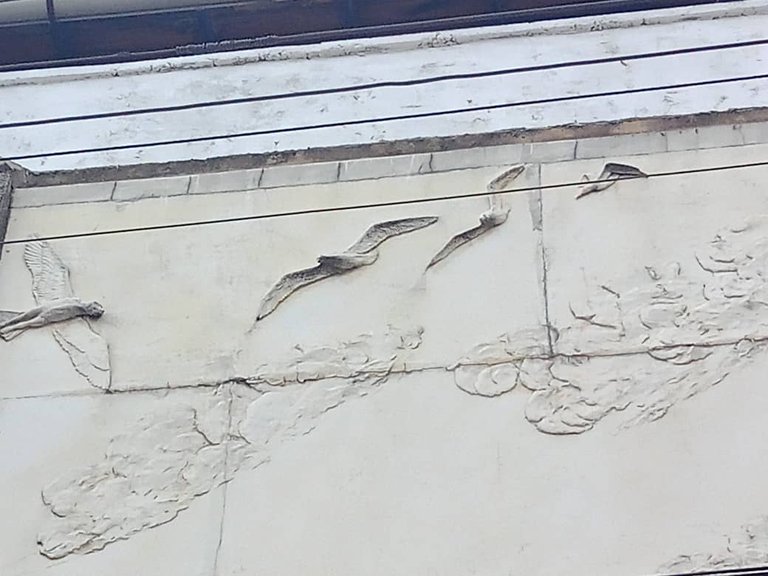
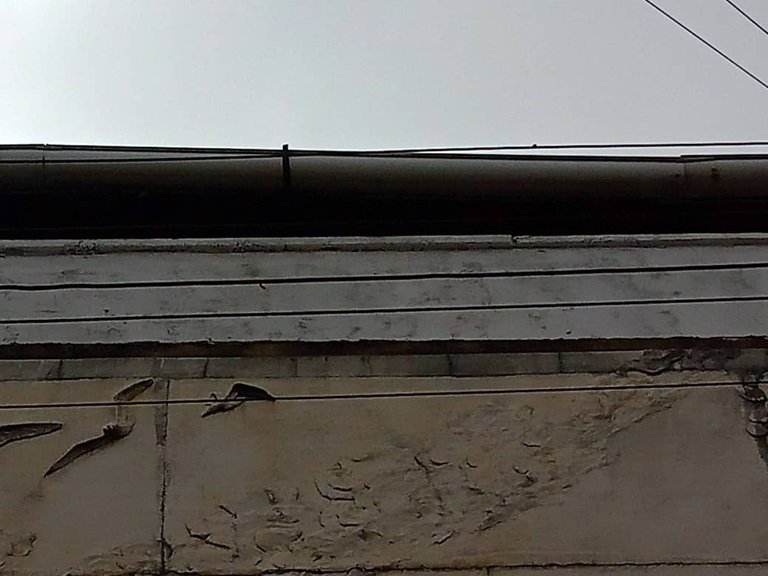
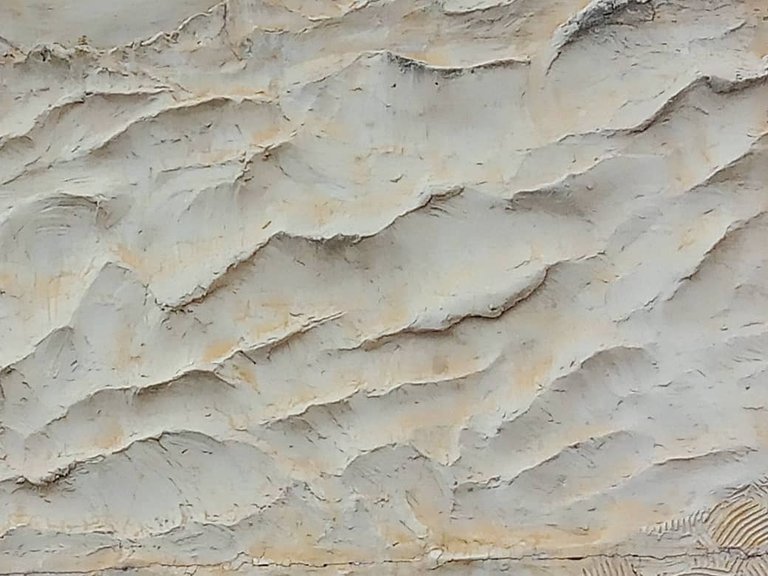
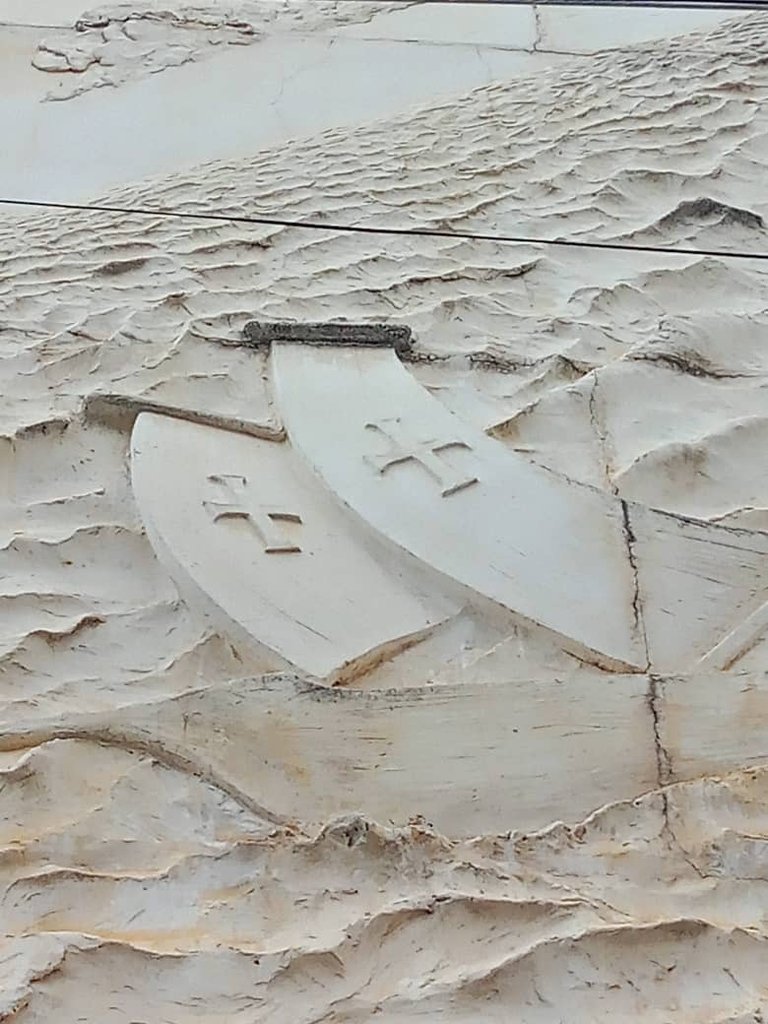

Blessings!

¡Bendiciones!

Código Pinmapple:[//]:# (!pinmapple 9.21701 lat -64.33594 long d3scr)
Translated with https://www.deepl.com/translator
All images are my own, captured by a Síragon LC-3000 camera.
Todas las imágenes son de mi autoría, capturadas por una cámara Síragon LC-3000.

